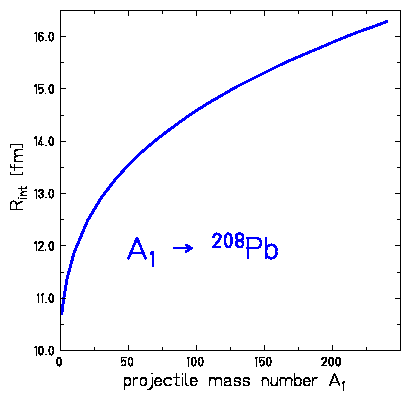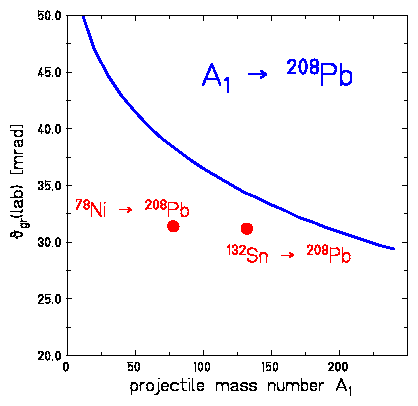
deflection function J1(b) at relativistic energies:
| ||||||||||||||||||||||
where Tlab is the laboratory energy in MeV, A1,Z1 and A2,Z2 are the mass (in amu) and charge number of the projectile and target nucleus and the impact parameter b (in fm). For bombarding energies larger than 100 MeV/u, the impact parameter b becomes identical with the distance of closest approach D. In case of electromagnetic interaction the smallest distance of closest approach is the nuclear interaction radius Rint which can be estimated using the following formulae (At.Data Nucl.Data Tables 25 (1980),389).

nuclear radius for homogeneous (sharp) mass distribution:
| (3) |
nuclear radius for diffuse (Fermi) mass distribution:
| (4) |
nuclear interaction radius:
| (5) |
For the nuclear interaction radius Rint the grazing angle Jgr(lab) can be calculated using the following formula.
grazing angle:
|
